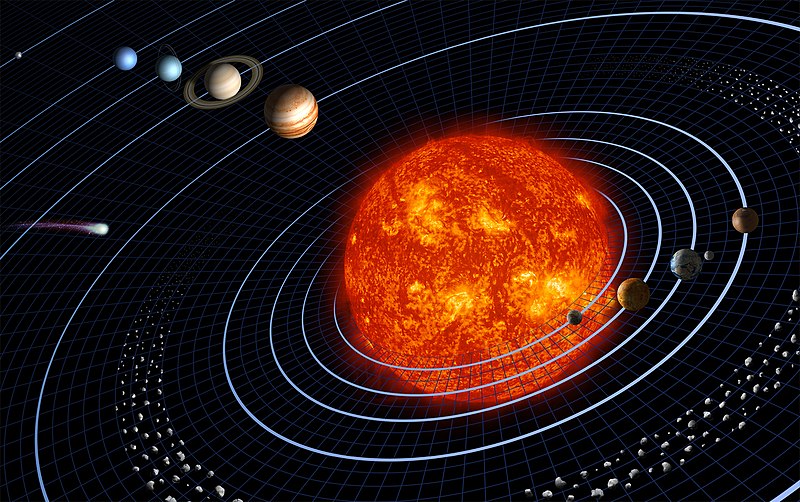
Planetary scientists have long wondered why Mars is so much smaller than the Earth or Venus. An international team of astronomers led by Kevin Walsh of Southwest Research Institute may have discovered the answer. Mars may have been robbed of building material by the wanderings of an early Jupiter.
As planets form around a star, they sweep together all the dust and rocks at their radius from that star. The debris at that distance is gradually incorporated into that planet. Because Mars has a larger orbit than the Earth, it should have had that much more material in its path and consequently, it should have been larger than the Earth. In actuality, Mars is only a little over half as big as the Earth.
According to this new theory, early in the formation of the solar system, currents of gas pulled Jupiter inward from its birth position at 3.5 AU (astronomical units, one of which equals the distance from the Earth to the sun) to about 1.5 AU from the sun, exactly where Mars would eventually sit. As Jupiter rolled through that region, it gathered much of the available debris to itself, depriving the early Mars of planet-building material and stunting its growth. The interesting thing is that Jupiter then made an about face, probably because of Saturn’s pull, and moved back out to its current position at 5.2 AU. This pattern of movement has been dubbed the ‘Grand Tack Scenario’. As Walsh explains:
This change in direction is like the course that a sailboat takes when it tacks around a buoy.New evidence from exoplanet research shows that gas giants do migrate inward and back out from their stars, so the Grand Tack Scenario is more likely than it sounds at first glance. In fact, it may explain the distribution of asteroids throughout the solar system.
No comments:
Post a Comment